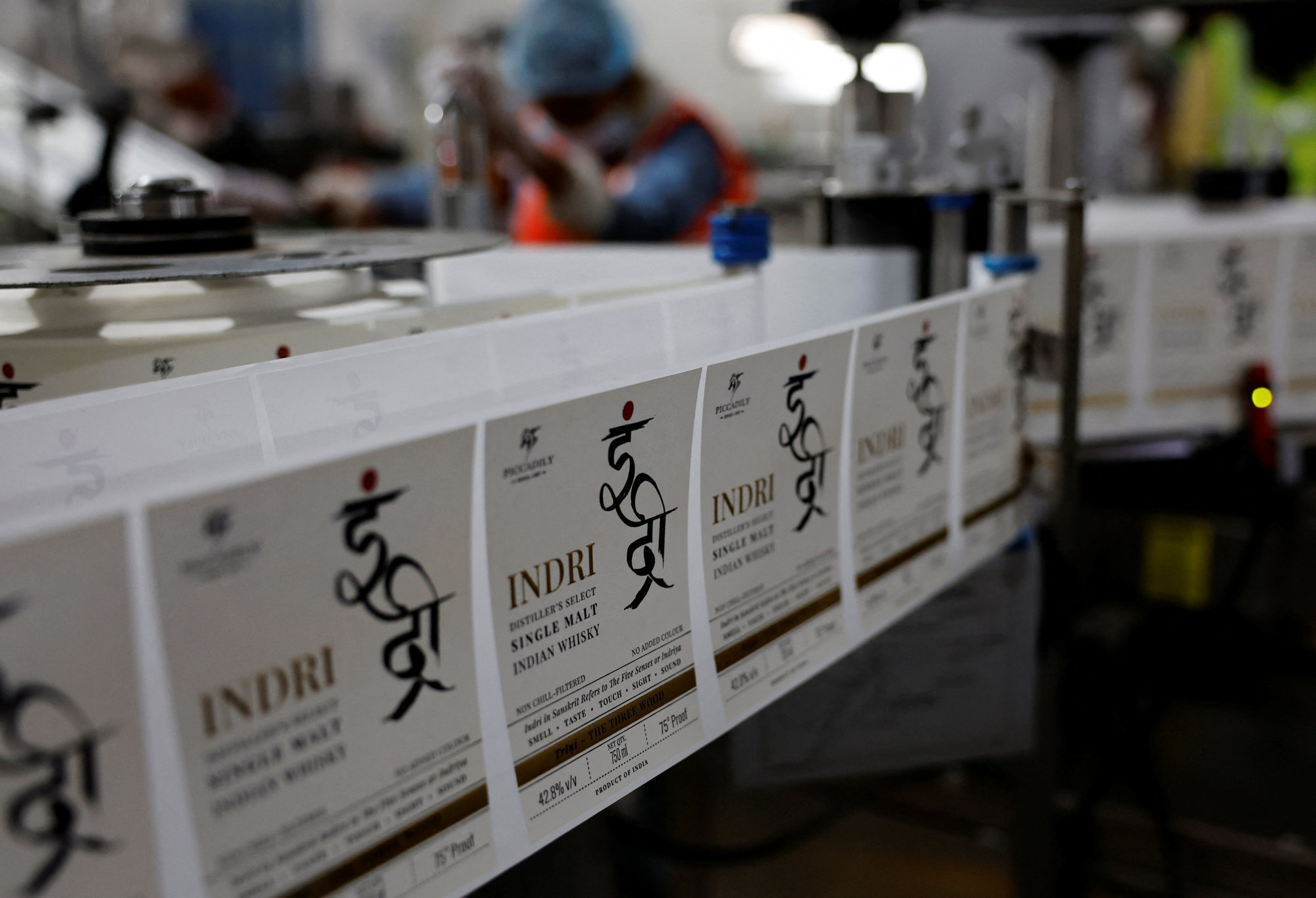
Move over, Scotch; Indian single malt whisky is on the rise, winning international awards and flying off the shelves at home. Global brands are tapping into the boom
- Indian single malts are shaking up whisky-loving India’s US$33 billion spirits industry and ending the long dominance of Scotches like Glenlivet and Talisker
- Global alcohol giants Diageo and Pernod Ricard have got in on the act with their own Indian malt whiskies, as Indian distilleries eye rapid expansion
Oak casks, once used to store bourbon and wine, are stacking up in a distillery near New Delhi, filled with ageing whisky as workers churn out almost 10,000 bottles a day of Indian single malt Indri, recently named the world’s best whisky.
Sugar cane and mustard fields, not peat bogs, ring the distillery, where the two-year-old Indian brand’s owner, Piccadily, is ramping up production and building a three-hole golf course to lure connoisseurs and tipplers in the whisky-loving nation.
As India comes into its own as a maker, not just consumer, of whisky, its single malts are reshaping the country’s US$33 billion spirits market.
Established global brands such as Glenlivet, made by France’s Pernod Ricard, and Talisker, from Britain’s Diageo fight for shelf space with local rivals Indri, Amrut and Radico Khaitan’s Rampur.

Unlike many Asian countries where beer dominates alcohol sales, India is predominantly a whisky-drinking nation. Global awards, increased affluence and a mass of drinkers trying new brands while cooped up during the Covid-19 pandemic have rocked India’s whisky landscape, industry executives and analysts say.
Aditya Prakash Rao for years drank foreign brands but now increasingly buys Indian malts for himself and for gifts during festive seasons.

Indian whisky gives him a sense of national pride – and goes well with Indian food – the lawyer says. “Nothing beats Indian malts in pairing with our kind of food, which is spicy. I love it.”
Indri’s US$421 Diwali Collector’s Edition won “Best in Show” at the Whiskies of the World Awards blind tasting in San Francisco in August, beating Scottish and American rivals.

With Bollywood stars and Indian music, Pernod this month uncorked its first made-in-India single malt, the US$48 Longitude 77, with plans to expand sales to Dubai and then the rest of the world.
“We are extremely bullish about this category. It has seen unprecedented growth,” says Kartik Mohindra, Pernod India’s chief marketing officer.
Diageo, Pernod’s larger rival, in 2022 launched its first Indian single malt, Godawan – named after a large, endangered Indian bird – that sells in five foreign markets, including the United States.

“We seem to be moving from whisky in India to Indian whisky – within India and globally,” says Vikram Damodaran, Diageo’s India chief innovation officer.
Sales of Pernod’s Glenlivet, long India’s top-selling single malt, grew 39 per cent by volume in 2022 but was dethroned by Amrut, sales of which rose by 183 per cent, data from market research company Euromonitor shows.
‘Lighter, healthier, and can be paired with Indian food’: sake has new fans
Indri maker Piccadily Distilleries hopes to expand capacity by 66 per cent to 20,000 litres (5,300) a day by 2025, and reach beyond the 18 foreign markets that make up 30 per cent of its sales, says founder Siddhartha Sharma.
It plans to double the number of casks to 100,000 at the sprawling distillery in a farm belt 160km (100 miles) north of India’s capital.
The local brands are not cheap: Indri starts at US$37 a bottle, Amrut at US$42 and Rampur at US$66 in shops near New Delhi. In comparison, Pernod’s Glenlivet retails from US$40 to US$118, depending on age.

At the Longitude 77 launch, Pernod served CEOs, diplomats, celebrity chefs and other invited guests the new single malt, and cocktails made with it using local ingredients like Kashmiri saffron and Alphonso mangoes.
Radico expects Rampur sales to double each year and will focus more on expanding the domestic market, as foreign sales now contribute 75 per cent of its business, says its president of international business, Sanjeev Banga.
The biggest endorsement of the category, he says, “is that you have both Diageo and Pernod coming up with an Indian single malt”.
“Otherwise, they were only talking about their mainstream foreign brands,” Banga adds. “They realise this is a category of the future.”

